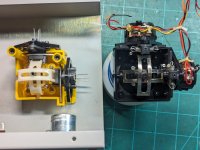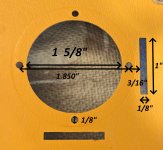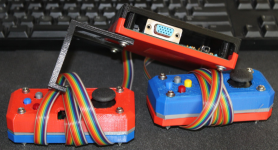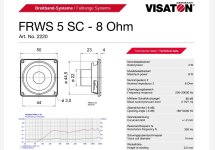I got my Kraft controller today and had an opportunity to take it apart. As you can see, the joystick mechanism is completely different from the original JS-1. It looks similar to the one cjs posted in #58, but not quite.
I took some readings of the pots for comparison and we may have a small issue.
For both Kraft joysticks and in both directions, I got resistance from ~ 0.71K to ~1.4K
For the JS-1 joystick, in one direction I get the exact same reading. However, in the other direction I get readings of 0.84K to 1.62K.

I took some readings of the pots for comparison and we may have a small issue.
For both Kraft joysticks and in both directions, I got resistance from ~ 0.71K to ~1.4K
For the JS-1 joystick, in one direction I get the exact same reading. However, in the other direction I get readings of 0.84K to 1.62K.










